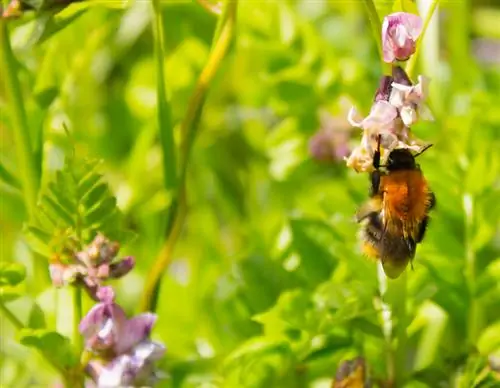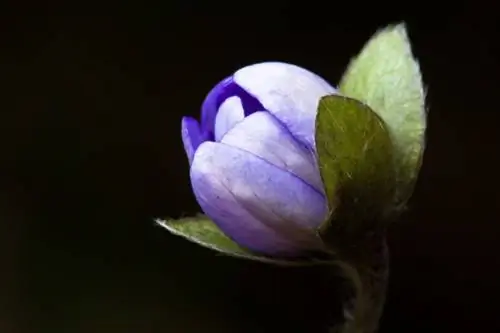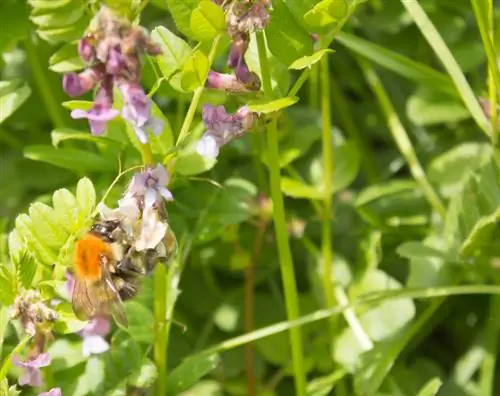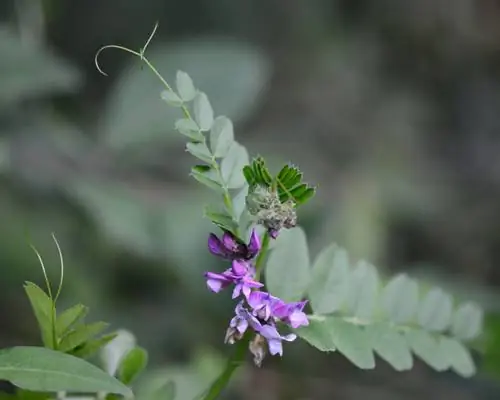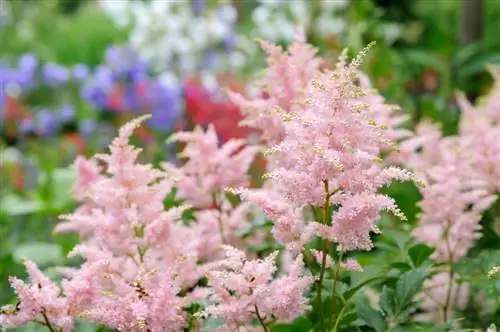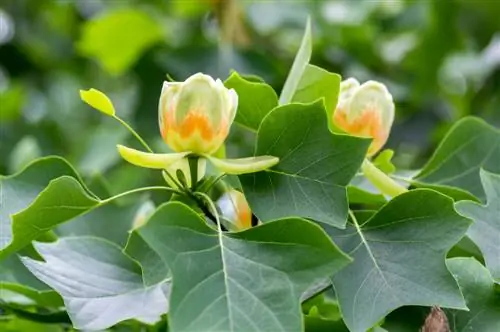- Author admin [email protected].
- Public 2023-12-25 17:45.
- Last modified 2025-01-23 11:20.
The sand vetch is well on its way to shaking off its reputation as a weed. Thanks to the pretty flowers and the dense foliage, hobby gardeners in the natural garden definitely recognize the advantages of the climbing butterfly family. Even though it is a wild plant, professional care benefits its growth and flowering. Here you can read compact answers to frequently asked questions directly from gardening practice.
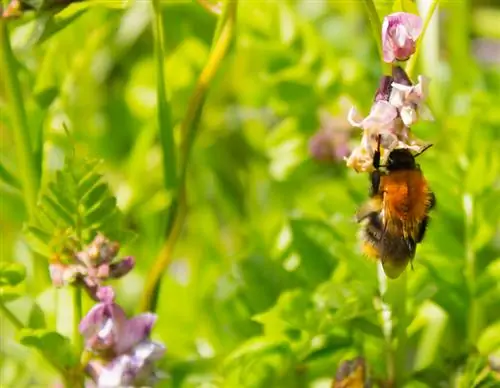
What are the characteristics and care instructions for the vetch?
The sand vetch is a climbing butterfly plant that is valued in the natural garden. It prefers sunny, warm locations and nutrient-rich, humus-rich soil. Regular watering, fertilizing with compost and trimming the shoots promotes their growth and flowering. The flowering period extends from May to October.
Planting vetch correctly
The young plants grown by hand or purchased ready-made take their place in the garden from mid-May. In a sunny, warm location, dig small pits 10-12 cm apart. Mix one third of the excavated material with compost and horn shavings (€52.00 on Amazon). Before you pot up the fence vetches, soak the root balls in water. Then remove the cultivation pots and plant a Vicia in each hole up to the bottom pair of leaves with the enriched substrate. Tie the lower tendrils to the climbing aid so that young shoots grow in the desired direction. If the struts of a fence are too far apart, cover them with wire mesh. Thanks to this help, the fence vetch finds the support it needs for rapid growth.
Care tips
The care program is based on a balanced water and nutrient balance, supplemented with two measures for bushy, compact growth and a lavish abundance of flowers. How to do it right:
- Water vetch regularly and generously as soon as the soil has dried out
- From May until the end of the flowering period, fertilize with compost every 14 days
- Additionally mulch the soil with leaves and repeatedly sprinkle with nettle manure
- About 3 weeks after planting, remove the shoots to encourage further branching
Cut off all withered flowers as soon as possible so that the next bloom can develop. Additionally, pile up the shoots of dead Vicia sepium so that adventitious roots form for optimal supply of the next flowers and improved stability.
Which location is suitable?
In a sunny, warm and protected location, the sand vetch climbs diligently towards the sky. In particular, choose a location that is protected from the wind so that the pretty flowers and leaves do not become ruffled or the tendrils lose their hold. Ideally, plant or sow the wild plant along a garden fence in nutrient-rich, humus-rich and fresh soil.
What soil does the plant need?
Choose the soil conditions at the location with a view to the high nutrient requirements of a vetch. In addition, the soil should be loose, humus-rich and well-drained. Give preference to fresh, moist garden soil over sandy, dry soil and avoid areas with the risk of waterlogging.
When is flowering time?
The flowering period extends from May to October. The vetch always achieves this floral feat if you regularly clean out the withered flowers. Otherwise, the wild plant invests its energy in the strenuous growth of the slightly poisonous pods, which comes at the expense of the flowers.
Cutting vetch correctly
Consistently cut out the withered flowers. Remove the flowers along with the very short stems so that the buds underneath can find their way to sunlight. Don't wait until the legumes form before cleaning out. This process takes so much energy from a vetch that the abundance of flowers falls by the wayside. After the first frost, the above-ground parts of the plant freeze reliably. You can either rake these under in spring or cut the shoots off close to the ground.
Watering vetch
The sand vetch is a thirsty plant. Therefore, water regularly and extensively if the amount of rain is not sufficient. To avoid waterlogging, check beforehand with a thumb test whether the top 1-2 cm of soil has dried out. It is beneficial for the vigor of a vetch if it is watered alternately with soft and normal water.
Fertilize vetch properly
In order to produce the opulent flowers and leaves, a regular supply of nutrients is essential. Fertilize the fence vetch with compost every 14 days from May to September. A mulch layer of leaves and grass clippings is an advantage, as it constantly supplies the hard-working soil organisms. Repeatedly shower the earth with nettle spray to give the climbing artist new impetus.
Propagate sweet peas
The propagation of Vicia sepium is very easy by sowing. To do this, leave a few flowers on the plant from July onwards so that the pods with the seeds thrive. In autumn you harvest the legumes, remove the seeds and dry them in an airy place. Please keep the toxic content in mind when doing this and refrain from snacking on the pea-like seeds. Sow at the end of February/beginning of March like this:
- Fill 10 cm pots with seed soil or peat sand
- Press 3-4 of the seeds previously soaked in water into the soil
- Sift over with substrate and pour in
In a partially shaded window seat at 15-18 degrees Celsius, keep the substrate slightly moist. Care for the seedlings until the planting season begins in mid-May.
Is sand vetch poisonous?
While the flowers and young shoots of a vetch can be eaten safely, this does not apply to the fruits. The pods with the seeds inside should not be consumed as they are slightly poisonous. Even small amounts can cause nausea, vomiting and diarrhea on a sensitive stomach. Therefore, cut off the withered flowers in good time to prevent the growth of the toxic legumes.
Is the vetch edible?
Its high protein content makes the sand vetch an interesting wild vegetable for natural cuisine. It's not just bees and butterflies that fly to Vicia sepium to feast on the rich nectar. The flowers and young shoots are extremely pleasant to the human palate. The flowers have made a name for themselves as an addition to salads or as an edible decoration for sparkling wine, water and fruit juices. The delicate shoots surprise with a mild aroma that is reminiscent of young peas. The legumes with the seeds they contain are not suitable for consumption as they are slightly poisonous.read more
Trivia
Our ancestors said that the vetch had magical powers. Whoever holds the plant in their hands must always tell the truth. In addition, customs say that with this plant you will win the hearts of those around you and make friends more easily. Last but not least, eating flowers and shoots is said to give people courage and strength. At least the latter could not be completely unfounded given the high protein and vitamin content of a sand vetch.

